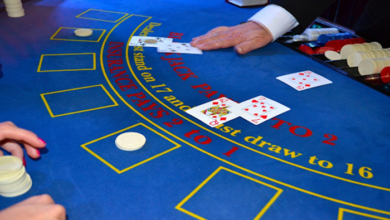Anglia Francja: A History of Rivalry and Friendship

Anglia and Francja are two of the most influential and powerful nations in Europe, with a long and complex history of relations. They have been allies and enemies, friends and foes, partners and competitors. We will explore some of the key moments and events that shaped their relationship, from the medieval wars to modern cooperation.
The Hundred Years’ War
One of the most famous and longest conflicts between Anglia and Francja was the Hundred Years’ War, which lasted from 1337 to 1453. The war was sparked by a dispute over the succession to the French throne, after the last direct Capetian king, Charles IV, died without a male heir in 1328. Three claimants emerged: Philip VI of Valois, Edward III of England, and Charles IV’s nephew, Charles of Navarre. Philip VI was crowned as the king of France, but Edward III, who was also a grandson of Philip IV of France through his mother Isabella, challenged his authority and claimed the French crown for himself.
The war was fought in several phases, with periods of truce and peace in between. The first phase (1337-1360) saw some of the most famous battles and victories for the English, such as the Battle of Crécy (1346), where Edward III’s longbowmen decimated the French cavalry, and the Battle of Poitiers (1356), where Edward’s son, the Black Prince, captured the French king John II. The Treaty of Brétigny (1360) ended this phase, with Edward renouncing his claim to the French throne in exchange for a large territory in France.
The second phase (1369-1389) was marked by the resurgence of the French under Charles V and his commander Bertrand du Guesclin, who used guerrilla tactics and diplomacy to recover most of the lost lands. The Treaty of Calais (1389) ended this phase, with both sides agreeing to a truce.
The third phase (1415-1429) was triggered by the renewal of the English claim to the French throne by Henry V, who invaded France and won a decisive victory at the Battle of Agincourt (1415), where he captured many French nobles. He then proceeded to conquer Normandy and allied with the Burgundians, who were rivals of the Armagnacs, the supporters of Charles VI and his son Charles VII. The Treaty of Troyes (1420) recognized Henry V as the heir to the French throne, but he died two years later, leaving his infant son Henry VI as king of both England and France.
Read more about Francja Maroko: A Preview of the Second Semi-Final of the World Cup 2022
The fourth and final phase (1429-1453) saw the rise of a national heroine for France: Joan of Arc. She claimed to have received visions from God to lead the French army against the English. She inspired Charles VII to be crowned as king at Reims in 1429, after lifting the siege of Orléans. She also won several battles against the English and their allies, but was captured by the Burgundians in 1430 and sold to the English, who burned her at the stake as a heretic in 1431. Her death galvanized the French resistance, and they gradually pushed back the English from their territory. The war ended with the Battle of Castillon in 1453, where the French artillery defeated the English army.
The Hundred Years’ War had a profound impact on both Anglia and Francja. It resulted in huge losses of lives and resources, as well as social and political changes. It also fostered a sense of national identity and patriotism in both countries, as well as a rivalry that would last for centuries.
The Napoleonic Wars
Another major conflict between Anglia and Francja was the Napoleonic Wars, which spanned from 1803 to 1815. The wars were caused by the ambition of Napoleon Bonaparte, who rose to power in France after the French Revolution and sought to dominate Europe and beyond. He faced a coalition of European powers that opposed his expansionism, led by Anglia.
The wars were fought in several campaigns across Europe, Africa, Asia, and America. Some of the most notable battles were:
- The Battle of Trafalgar (1805), where Admiral Horatio Nelson defeated the combined French and Spanish fleets off the coast of Spain, securing Anglia’s naval supremacy.
- The Battle of Austerlitz (1805), where Napoleon crushed the Russian and Austrian armies in Moravia, forcing them to sign the Treaty of Pressburg that gave him control over most of Central Europe.
- The Battle of Jena-Auerstedt (1806), where Napoleon defeated the Prussian army in Germany, leading to his occupation of Berlin.
- The Battle of Borodino (1812), where Napoleon fought a bloody and indecisive battle against the Russian army near Moscow, which he later entered but had to abandon due to the harsh winter and the scorched-earth policy of the Russians.
- The Battle of Leipzig (1813), where Napoleon faced a coalition of Russian, Prussian, Austrian, and Swedish forces in Germany, and was forced to retreat after losing a third of his army.
- The Battle of Waterloo (1815), where Napoleon met his final defeat at the hands of the Duke of Wellington and the Prussian general Gebhard von Blücher in Belgium, ending his rule and exile him to St. Helena.
The Napoleonic Wars had a lasting impact on both Anglia and Francja. They reshaped the political and social landscape of Europe, as well as the balance of power in the world. They also inspired a wave of nationalism and liberalism in many countries, as well as a cultural and artistic legacy that is still admired today.
The World Wars
The most recent and devastating wars between Anglia and Francja were the World Wars, which took place in the first half of the 20th century. Unlike the previous wars, however, Anglia and Francja were not enemies, but allies against a common foe: Germany.
The First World War (1914-1918) was triggered by the assassination of Archduke Franz Ferdinand of Austria-Hungary in Sarajevo by a Serbian nationalist. This sparked a chain of alliances and declarations of war that involved most of Europe and other parts of the world. Anglia and Francja were part of the Triple Entente, along with Russia, that fought against the Central Powers, composed of Germany, Austria-Hungary, Ottoman Empire, and Bulgaria.
The war was fought mainly on two fronts: the Western Front, where Anglia and Francja faced Germany in a trench warfare that resulted in millions of casualties and little territorial gain; and the Eastern Front, where Russia fought against Germany and Austria-Hungary until it withdrew from the war after the Bolshevik Revolution in 1917. The war also saw the use of new weapons and technologies, such as machine guns, tanks, airplanes, submarines, poison gas, and radio.
The war ended with the Armistice of 11 November 1918, followed by the Treaty of Versailles in 1919, which imposed harsh terms on Germany, such as accepting full responsibility for the war, paying reparations to the Allies, ceding territory to France and Poland, and limiting its military size and power. The treaty was seen by many Germans as unjust and humiliating, and contributed to the rise of Nazism in Germany.
The Second World War (1939-1945) was a direct consequence of the First World War. It began when Nazi Germany invaded Poland in September 1939, prompting Anglia and Francja to declare war on Germany. They were soon joined by other countries that formed the Allies, such as the United States, Canada, Australia, New Zealand, China, India, Soviet Union, and others. They faced the Axis powers, composed of Germany, Italy, Japan, and their allies.
The war was fought on multiple fronts: Europe, Africa, Asia, Pacific Ocean. Some of the most significant events were:
- The Battle of Britain (1940), where Anglia resisted the German air raids that aimed to destroy its air force and prepare for an invasion.
- The Battle of El Alamein (1942), where Anglia defeated Germany in Egypt, preventing them from capturing the Suez Canal and reaching the oil fields of the Middle East.
- The Battle of Stalingrad (1942-1943), where Soviet Union stopped Germany’s advance into Russia and turned the tide of the war on the Eastern Front.
- The D-Day (1944), where Anglia led a massive amphibious landing in Normandy with Francja’s help to open a second front in Western Europe.
- The Battle of Berlin (1945), where Soviet Union captured Germany’s capital city after a fierce street fighting that ended with Hitler’s suicide.
- The Atomic bombings of Hiroshima and Nagasaki (1945), where United States dropped nuclear bombs on Japan’s cities to force them to surrender.
The war ended with the unconditional surrender of Germany on 8 May 1945 (V-E Day) and Japan on 15 August 1945 (V-J Day). The war resulted in an estimated 60 million deaths worldwide, making it the deadliest war in history. It also led to major political and social changes in Europe and around the world. It gave rise to new international organizations such as the United Nations and NATO; it divided Europe into two blocs: Western Europe under American influence and Eastern Europe under Soviet influence; it marked the beginning of the Cold War between United States and Soviet Union; it triggered a process of decolonization that saw many former colonies gain their independence; it also sparked a period of economic recovery and cultural innovation.




